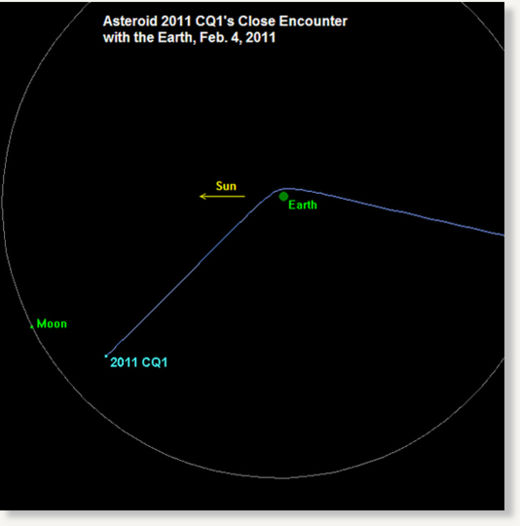When something that small comes close to our planet, Earth's gravity is sure to bend its orbit. In this case, the approach was so close that the little asteroid's path bent by 60 degrees, reports Don Yeomans of NASA's Jet Propulsion Laboratory in Pasadena, California.
Short of collisions with a planet, that's the biggest orbital change ever recorded by observers. It was large enough to shift the asteroid from one category of objects into another. As Yeomans and his JPL colleague Paul Chodas explain in an online update:
Prior to the Earth close approach, this object was in a so-called Apollo-class orbit that was mostly outside the Earth's orbit. Following the close approach, the Earth's gravitational attraction modified the object's orbit to an Aten-class orbit where the asteroid spends almost all of its time inside the Earth's orbit.Gravitational encounters between objects large and small have been rearranging the solar system since it formed some 4.56 billion years ago. We now believe even planets have been shuffled in their orbits. In this case, we had the good fortune to spot a very large change in the orbit of one very small object around the sun.
But now that 2011 CQ1 has had its 15 minutes of fame, we are unlikely to spot the small, dim object again, says Emily Lakdawalla of the Planetary Society, a space advocacy group in California: "We'll probably never be close enough to it again to be able to pick its dim light out from the background of stars."




A quick internet search of asteroid 2004 FU162 comes up witht the previous closest distance of a 6500 km wizz past. Compared to 2011 CQ1 at 5480 km wizz past which is about 1020 km closer.
No wonder it got bent out of shape. I wonder how close something has to get before it doesn't wizz past and gets caught in Earths gravitational field?